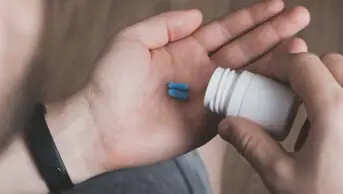GB : Now I’d like to introduce Schistosoma haematobium , a blood-sucking fluke that lives in humans. Welcome. I’d like to start by asking why you are confined to Africa, the Middle East and some Indian Ocean islands. SH : Thank you for inviting me, Georgina. The areas you mentioned provide the essential requirements for my existence. I need light, warm water with human contact and a specific type of snail that lives in those parts. Let me illustrate this with a brief description of my life cycle, which is divided into two stages.
Over the next few months in my new home, I asexually reproduced into thousands of cercariae, another larva form that can infect humans. These cercariae were rhythmically ejected back into the water, where they navigate towards a human host using shadows, water turbulence and stimuli like sweat and fatty acids on human skin. As a cercaria, I only had about 48 hours to find my new host. I was fortunate enough to find one quite quickly. I burrowed through the skin, wriggled into a blood vessel and then had to make my way to the liver — no smooth ride. GB : Why is that? SH : Well, there’s a lot of churning and sloshing about and banging into fatty blobs, clots and even other parasites and germs. I had to make two circuits before finding the liver where I had my first blood meal since leaving the snail. What a feast! Once fed, I began to mature and sent out chemical signals to locate a male partner. Humans in these parts spend so much time in our waters that it is not uncommon for them to be infected with more than one cercaria. I didn’t have to wait around for long before Bob came along and we have been together ever since. We schistosomes are monogamous, you know. GB : So was it love at first sight? What do you think it was about you that attracted him? SH : I don’t know really. Like all females I am small and slender. I easily fit into his canoe-shaped body. It just felt natural. Bob locked me in and, together, we started on a romantic two-week tour of our host’s body before settling in a vein near the bladder. Bob secured us by sinking his two suckers into the wall. He absorbed nutrients, and passed them on to me. Each day, after mating, I released between 20 and 200 eggs, which would be expelled in our host’s urine. GB : The disease schistosomiasis is also known as bilharzia, named after Theodor Bilharz who, in 1851, discovered and identified your eggs in corpses. Over 200 million people have bilharzia. It has even been found in an Egyptian mummy and recorded in ancient papyri. What’s it like to be the second most successful parasitic infection after malaria? SH : First, Georgina, I’d like to point out that we only infect about 100 million people. Our sisters, S japonicum and S mansoni are responsible for the rest. As to our success, I suggest you blame yourselves. You construct dams and irrigation systems that provide homes for the snails that are so crucial to our survival. You then wash your clothes and your children play, drink and urinate in the same water. You do not find us where there is good sanitation and safe water supply. GB : So you live where there is poverty and cause about 20,000 deaths each year, not to mention anaemia, retarded development in children and intense suffering in many of those who survive. Don’t you also decrease the fecundity of infected snails? SH : Yes. We need to produce a lot of cercariae in snails to ensure our survival and this requires energy. We make snails eventually become sterile so all their energy can then go towards our reproduction. A high mortality in humans is not beneficial to us because you are our final and definitive host for egg production. The deaths we cause are minimal compared with the number infected. Moreover, the disease bilharzia is instigated by you. GB : How so? SH : There is no reaction from your immune system to adult worms. But it is different for our eggs. These possess spines and when they migrate into the bladder they release proteolytic enzymes. These damage tissue, causing the main symptom of blood in the urine. Most eggs are excreted, but some get trapped and are calcified or attacked by macrophages resulting in granulomas. These swellings damage the bladder, ureters and kidneys and can lead to cancer in advanced cases. Eggs also migrate to other organs in the body initiating granuloma formation. GB : But you are a parasite. You get free board and lodging. Surely you cannot blame us for an illness that appears when our immune systems decide to attack your eggs. SH : I know you think we are repugnant. Let’s not be naive here. This is no symbiotic relationship — it is all one-sided. Nevertheless, we are part of your ecosystem and we co-evolve. We have driven your immune system to work at full capacity — to become stronger in order to resist us. Then we adopt new tricks, you counter attack and so it goes on. It is a biological arms race. GB : Like in Lewis Carroll’s ‘Through the Looking Glass’ where the Red Queen says to Alice: “Now, here, you see, it takes all the running you can do, to keep in the same place.” SH : Yes, but we always have to stay ahead of you to ensure our survival. GB : But we have developed another weapon against you: chemotherapy. We have used antimony salts but they were toxic, with serious effects on the heart and liver. Lucanthone, hycanthone and niridazole also failed because of safety concerns. Then metrifonate was discovered, which is still used today, but the best, so far, is a pyrazino-isoquinoline compound called praziquantel. Discovered around 1972 by Merck and Bayer, it was first used as an anthelminthic in veterinary practice. It is given orally as a single dose, is rapidly absorbed with high therapeutic efficacy and no serious side effects. SH : That was a dreadful discovery. It makes me queasy just thinking about it. That substance contracts our muscles and produces spastic paralysis. Our suckers lose their grip and our external layer, the tegument, is damaged. We can then be invaded by your phagocytes and granulocytes, which make us disintegrate. Our only consolation is that your drug is not effective against immature worms and eggs. GB : So reinfection can occur and I’m sure, in time, your indomitable immune system will come out on top and adults will achieve resistance. However, as we speak, a vaccine is being developed. We can also improve our sanitation and water supply, control snail populations and educate the people. SH : Our world, like yours, is fraught with dangers but we shall overcome them even if we have to force you to do our will like others of our kind have done to their hosts. Many traits in plants and animals have evolved in response to our presence. Genes have been changed and behaviour altered so plants and animals eat, live and mate to suit parasites’ needs. We can do that to you, too. We take from you what we need to survive and reproduce and you call us parasites. You take from this earth what you need to survive. You feed off this planet, plundering and destroying its resources to make your lives comfortable, transforming it to suit your needs, polluting it with your wastes, devouring to extinction other forms of life. Are you not parasites, too? GB : Um, on that caustic note we’ve come to the end of our show. I’d like to thank our … er … guest for sharing her thoughts with us. ACKNOWLEDGEMENT Special thanks to Samantha Wilkinson, a researcher at The Natural History Museum, London, for technical advice. Bibliography · Zimmer C. Parasite rex. Croydon: Arrow Books; 2003. |
Interview with a trematode parasite
Last week, Georgina Boodhooinvited a special guest to her popular radio programme, broadcast from Africa. Here is an excerpt from the show
 I began life as an egg released by my mother who lived in a vein near the bladder of a human. I migrated into the bladder and was expelled in urine into fresh water with a temperature of 25C where I hatched into a miracidium, a larva form, which is only infective for between eight and 12 hours. I was free but I needed to find a snail host. By sensing chemicals released from snails I was able to locate one. I penetrated the skin and then underwent transformation into a sporocyst.
I began life as an egg released by my mother who lived in a vein near the bladder of a human. I migrated into the bladder and was expelled in urine into fresh water with a temperature of 25C where I hatched into a miracidium, a larva form, which is only infective for between eight and 12 hours. I was free but I needed to find a snail host. By sensing chemicals released from snails I was able to locate one. I penetrated the skin and then underwent transformation into a sporocyst.

